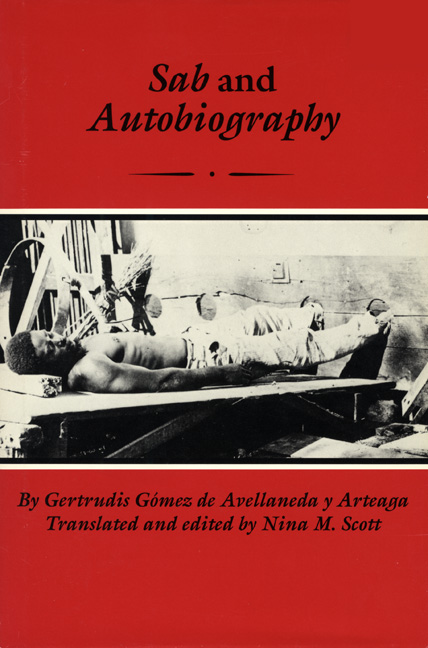2.3.6.3 The novel “Sab”, by Gertrudis Gómez de Avellaneda (1814 – 1873)

Sab is the first novel written by Gertrudis Gómez de Avellaneda, written between 1838 and 1839, when she was already living in Spain. It also addresses the topic of slavery, in line with what was being written on the island under the ethical and aesthetic aegis of Domingo del Monte. Although at that time she had no contact with the circle of this intellectual, who pressed almost all the strings of anti-slavery narrative production, the convergence in the topic indicates how urgent a solution to this scourge had become.
The novel’s protagonist is a mixed-race slave. In her plot, Avellaneda delves deeply into the workings of class society. The island’s natural beauty is masterfully described, demonstrating that the author’s emotional memory remained alive. Perhaps with the passage of time, she would lose the sharpest nuances of her overseas homeland; but the American vehemence with which she embraces the most pressing issues of her time would survive in this and her other works.
La Avellaneda, despite her youth, had achieved a considerable command of the Spanish language, this is evident in the text, although at times she becomes entangled in rhetoric typical of the early Romantic period, incurring in idealizations that reveal her little real contact with the phenomenon she addresses, which has not been truly experienced but seen through the sieve of all the social conditioning so difficult to avoid.
In addition to slavery, another vortex of the work is the situation of women in 19th-century society. The author even interweaves both problems by having one of the female characters fall in love with the slave Sab, which, even though it was in the realm of fiction, was a scandal and brought her criticism from the most moralists of her time.
Some critics point out that the character’s “whitewashing” diminishes her ability to represent an entire social stratum in which, although racial mixing infiltrated, the pure black color brought from the hot African plains predominated. However, this very mixing alludes to the most illicit love affairs, which inspired both horror and fascination, repudiation and magnetization, satiated in the secrecy of salons and barracks alike, very similar to Avellaneda’s fondness for going against the most rigid social conventions.
The author draws a parallel between the situation of slaves and that of women: “Oh! Women! Poor, blind victims! Like slaves, they patiently drag their chains and bow their heads under the yoke of human laws. With no other guide than their ignorant and credulous hearts, they choose a master for life. The slave can at least change masters; he can hope that by buying gold he can one day buy freedom, but the woman, when she raises her wasted hands and her outraged brow to ask for freedom, hears the monster with the sepulchral voice shouting at her: In the grave!”
This novel is generally overlooked in 19th-century literary historiography of the genre, even though it is part of its definitive emergence. La Avellaneda had only recently moved to Spain when the work was published; perhaps she had been conceiving it sometime before leaving Cuba. The spiritual landscape of the island was fresh in her mind, as well as how slavery irremediably obscured it. This she captured quite successfully, especially through her empathy with the character, which she constructed from her condition as a woman, rather than from a deep understanding of the phenomenon itself.








